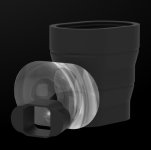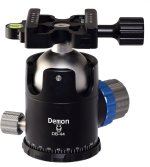Dawg Pics
Senior Member
@hark Rayleigh scattering of light through the atmosphere causes the red color. The sky is blue for the same reason. There is more atmosphere for the light to pass through from horizon, so the moon looks redder and then gets lighter as it gets higher up. If you can catch a rising orange/red moon, it is pretty spectacular and pretty cool to watch it change color. I can't explain the physics of it all, something about particles, wavelenghts, etc, etc. 
Last edited:




